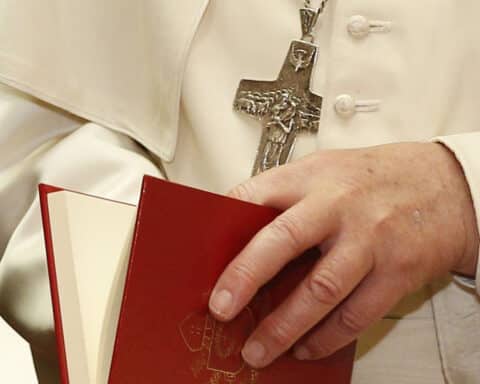
Many of the Fathers of the Church, though, read this passage in a different light, and their interpretation remained common among Catholics until rather recently. In this view, the trial in the desert was the devil’s attempt to figure out who Jesus was, and Satan went away just as confused as he had been before the first temptation. St. Leo the Great, pope in the first half of the fifth century, sums up the implications of that interpretation well in his Sermon 62 on the Passion: Three years later, when Jesus uttered the words, “It is finished,” and gave up his spirit, the devil still didn’t know whom he had managed to kill. It was only on Holy Saturday, when Christ descended into hell and preached the Gospel to all those who had gone before, freeing everyone who believed, that the devil recognized him.
In putting Jesus to death, Pope Leo writes, “[The devil] was defeated by his own malice: He inflicted punishment on the Son of God, and [that punishment] was transformed into a healing remedy for all the sons of men.” Had Satan known whom he was attacking, “he would have tried to gently calm the minds of the Jews instead of inciting them to hatred, lest he lose power over all his captives by attacking the One who owed him nothing.”
As far as I know, the Church has never definitively ruled that one interpretation or the other is correct. Meditating on each, though, takes us in different directions. If the devil knew whom he was tempting in the desert and whose death he was arranging on Good Friday, he looks to be all rage and no power. Christ would, of course, resist his temptations and would rise on the third day as he had predicted. But if he wasn’t certain who Jesus was, these events become more interesting. The devil was attacking a man who, as far as he knew, was a man just like the rest of us, whose only distinction, perhaps, was that he was uniquely devoted to the Father. When he succeeded in bringing about Jesus’ death on Good Friday, Satan thought that the threat this man posed truly was finished.
But he was wrong, and the means by which Christ defeated the devil was not his divine omnipotence but, in Pope Leo’s words, “our weak and humble nature.” His resurrection flowed from his divinity, but Christ triumphed over Satan through the very flesh and human will that he shares with every one of us. By holding fast to the will of his Father in a world that had departed from that will, even though he knew it would mean his physical death, he conquered not only his death but ours.
In the earliest centuries of the Church, that interpretation must have brought great consolation to the women and men who knew that their refusal to deny the truth might win them the crown of martyrdom. Today, that same interpretation can give us the strength to proclaim the truth in a world that not simply denies the truth but no longer knows what the very word even means. Christ triumphed — and we can, too — not because of what we don’t share but because of what we do.
Scott P. Richert is publisher for OSV.





